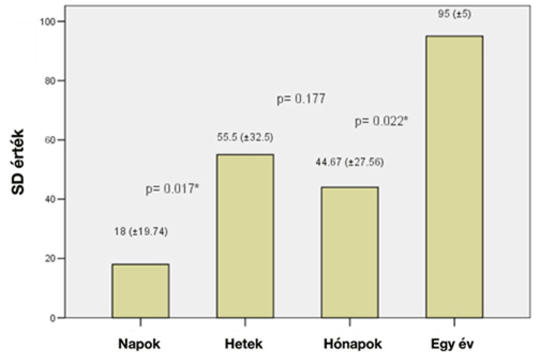[Background – Dizziness is one of the most frequent complaints when a patient is searching for medical care and resolution. This can be a problematic presentation in the emergency department, both from a diagnostic and a management standpoint.
Purpose – The aim of our study is to clarify what happens to patients after leaving the emergency department.
Methods – 879 patients were examined at the Semmelweis University Emergency Department with vertigo and dizziness. We sent a questionnaire to these patients and we had 308 completed papers back (110 male, 198 female patients, mean age 61.8 ± 12.31 SD), which we further analyzed.
Results – Based on the emergency department diagnosis we had the following results: central vestibular lesion (n = 71), dizziness or giddiness (n = 64) and BPPV (n = 51) were among the most frequent diagnosis. Clarification of the final post-examination diagnosis took several days (28.8%), and weeks (24.2%). It was also noticed that 24.02% of this population never received a proper diagnosis. Among the population only 80 patients (25.8%) got proper diagnosis of their complaints, which was supported by qualitative statistical analysis (Cohen Kappa test) result (κ = 0.560).
Discussion – The correlation between our emergency department diagnosis and final diagnosis given to patients is low, a phenomenon that is also observable in other countries. Therefore, patient follow-up is an important issue, including the importance of neurotology and possibly neurological examination.
Conclusion – Emergency diagnosis of vertigo is a great challenge, but despite of difficulties the targeted and quick case history and exact examination can evaluate the central or peripheral cause of the balance disorder. Therefore, to prevent declination of the quality of life the importance of further investigation is high.]





COMMENTS
0 comments